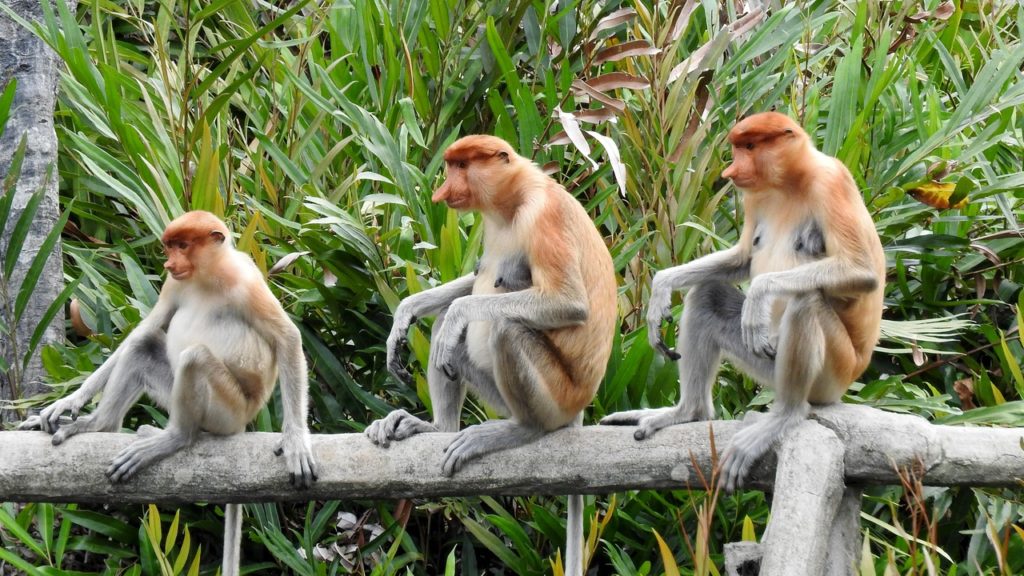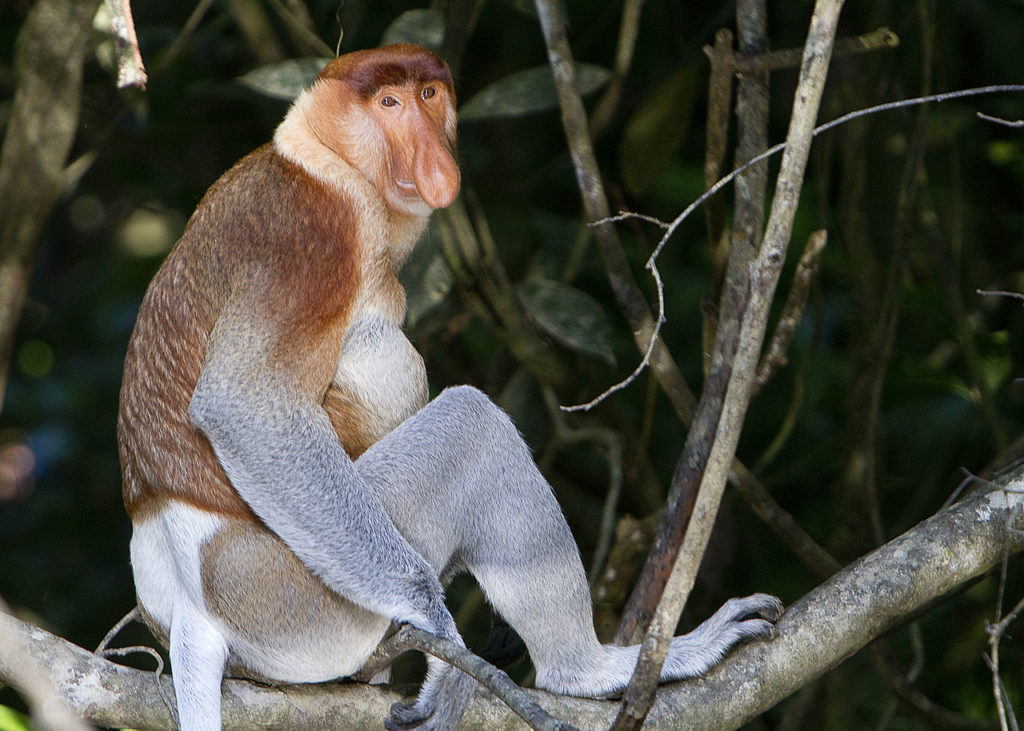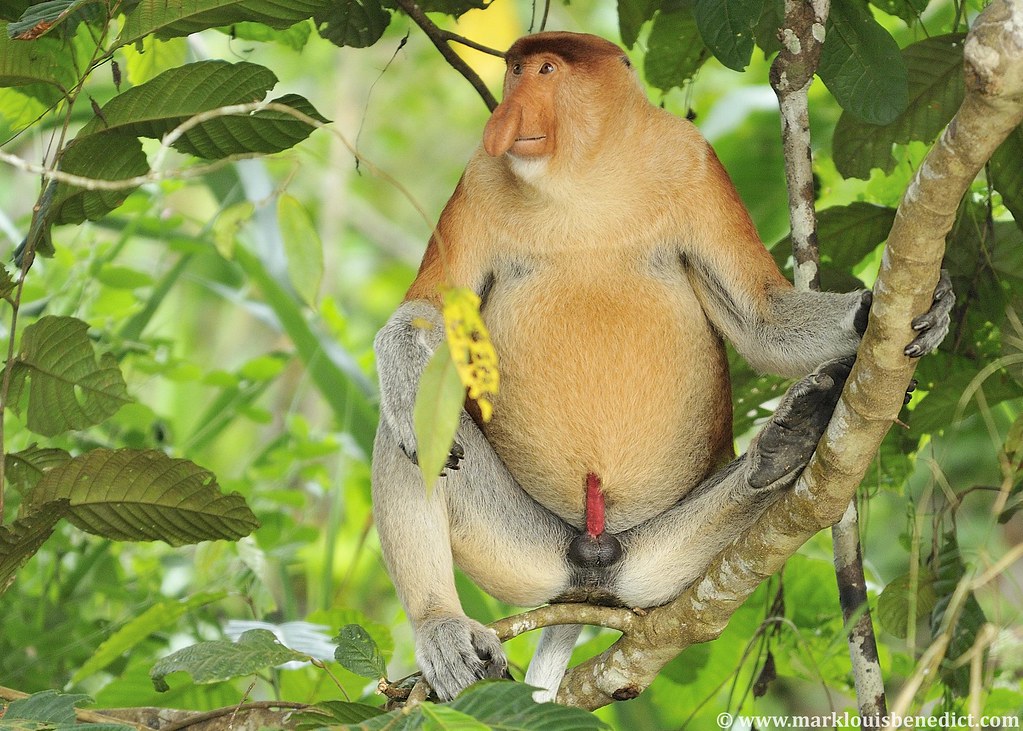The proboscis monkey is a large species, being one of the largest monkey species native to Asia. Males have a head-body length of 66 to 76.2 cm (26.0 to 30.0 in) and typically weigh 16 to 22.5 kg (35 to 50 lb), with a maximum known weight of 30 kg (66 lb). Females measure 53.3 to 62 cm (21.0 to 24.4 in) in head-and-body length and weigh 7 to 12 kg (15 to 26 lb), with a maximum known mass of 15 kg (33 lb).
 The proboscis monkey has a long coat; the fur on the back is bright orange, reddish brown, yellowish brown or brick-red. The underfur is light-grey, yellowish, or greyish to light-orange.
The proboscis monkey has a long coat; the fur on the back is bright orange, reddish brown, yellowish brown or brick-red. The underfur is light-grey, yellowish, or greyish to light-orange.
Proboscis monkeys have large noses, which is the largest and longest nose among primates. Male proboscis monkeys’ noses can be up to 18 cm long. The long nose is a way to attract females during the breeding season, a tool for males to flirt with females. Also thanks to this nose, proboscis monkeys can emit sounds that can be heard hundreds of miles away.
 They have the ability to chew cud like some ungulates. The belly of this monkey is large because it has many compartments, each containing a different enzyme to digest food.
They have the ability to chew cud like some ungulates. The belly of this monkey is large because it has many compartments, each containing a different enzyme to digest food.
Proboscis monkeys generally live in groups composed of one adult male, some adult females and their offspring.
 Proboscis monkeys eat mainly fruits and leaves, but they can also eat flowers, nuts, and insects. Proboscis monkeys live mainly in trees. They have a habit of swinging, jumping from branch to branch in search of food.
Proboscis monkeys eat mainly fruits and leaves, but they can also eat flowers, nuts, and insects. Proboscis monkeys live mainly in trees. They have a habit of swinging, jumping from branch to branch in search of food.
Currently, proboscis monkeys are listed as endangered on the IUCN Red List due to overhunting and ongoing habitat loss.
According to Wikipedia.














